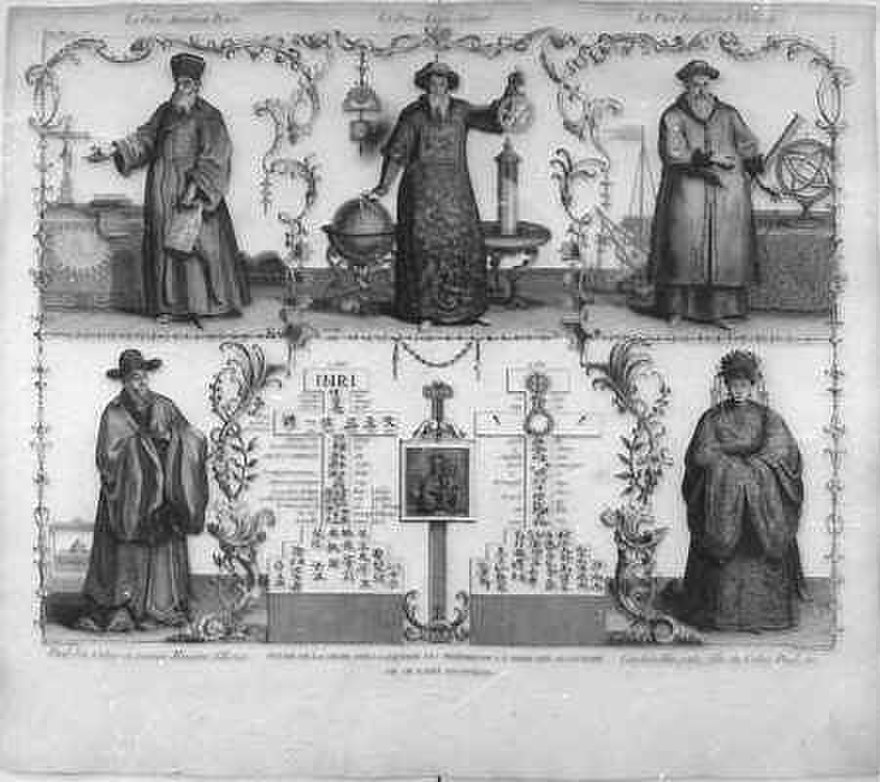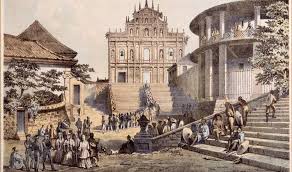Servants of God - Bartholomew Alvares, Emmanuel de Abreu, Vincent da Cunha, John Caspar Kratz, SJ
Died: Jan 12, 1737
Born:
S. G. Bartholomew Alvares Aug 10,1706
S. G. Emmanuel de Abreu Oct 14,1708
S. G. Vincent da Cunha Feb 2, 1708
S. G. John Caspar Kratz Sep 14, 1698
 Frs Alvares, Abreu, Cunha and Kratz, the four Jesuit missionaries assigned to Tonkin, a part of today’s Vietnam during the first half of the 18 th century suffered persecution for their faith and became martyrs of Vietnam.
Frs Alvares, Abreu, Cunha and Kratz, the four Jesuit missionaries assigned to Tonkin, a part of today’s Vietnam during the first half of the 18 th century suffered persecution for their faith and became martyrs of Vietnam.
Fr Alvares was born in Paramio, Portugal and entered the Society in Coimbra in 1723. He was sent to India in 1730 and was transferred to Macau in 1731.
Fr Abreu also from Portugal was from the Aveiro district and became a Jesuit in 1724. He arrived in Goa, India in 1733 and went to Macau in 1734.
Fr Cunha also a Portuguese was born in Lisbon. He was a Jesuit since 1726 and was sent to Macau in 1734.
Fr Kratz, a German was born in Golzheim bei Duren (between Aachen and Cologne) He became a Jesuit at thirty-two after a life of adventure and travel. He was ordained in 1734 and was sent to the Tonkin mission the following year.
The four missionaries and two other Jesuits, Frs Da Sampayo and Emmanuel Carvalho departed Macau on 13 April, 1735 but were stopped a few days after passing Hainan Island. They were arrested and imprisoned at Nan-Cheu by Chinese coastal guards. They were only released after their superior in Macau sent an emissary to Nan-Cheu to negotiate their release on condition they returned to Macau, which they did on Dec 24, 1735.
The four missionaries made a second attempt for Tonkin on Mar 10, 1736, dressed as Chinese merchants. They went by land through Guangdong province and arrived at Lienchow, on the northeastern shore of today’s Gulf of Tonkin before setting up base at Lofeu, a Tonkin mission station. At Lofeu their guide left them to return to Macau. After a short rest, the missionaries were eager to go inland. As Fr Sampayo had fallen ill and was unable to travel, Fr Carvalho stayed behind to care for him.
The four Jesuits accompanied by two Tonkinese cathechists, Mark Tri and Vincent Nghiem, set off for Batxa, where a prominent Christian gave them hospitality for two days. However the news of their presence in Batxa was not kept a total secret and some non-Christians who after hearing of the priests’ arrival, planned to waylay them as they left the city. On April 12, 1736, the missionaries were ambushed and robbed and their arms and feet were chained and they were brought before the local mandarin. Finding a crucifix on one of the missionaries’ chest, the mandarin exclaimed, “There is no doubt that these are teachers of that religion which has often been forbidden in these states, and under grave penalties.”
 They were led to prison with wooden yokes placed on their necks. On the 18 th, they were handed over to the district governor, who put them in cages and sent them to the capitol Ketcho (today’s Hanoi). The trip to Ketcho took them three days under the hot sun and the four missionaries and two catechists suffered from acute hunger and thirst. At the royal palace, the two catechists were interrogated by the mandarin while the missionaries were asked to tread on a crucifix placed on the ground before them. Instead the missionaries knelt down and kissed the crucifix and were kicked and goaded by the mandarins as the former were willing to lose life and limb rather than to apostatize their religion. This angered the mandarin who ordered them to be incarcerated until the king’s wishes were known. A few days later, the prisoners were taken before the supreme tribunal. When the catechists courageously continued to profess their faith, Mark was given fifteen hammer blows to his knees and Vincent, five. The following day, when the catechists were about to receive more hammer blows, one of the judges stood up and spoke, “This one,” pointing to Mark, “ deserves, without further examination, to be quartered, because he led these teachers of a proscribed religion here. This companion of his should also be beheaded because he is his accomplice. The same should be done to the four teachers of that religion. Though forbidden, they dared to come here with no other reason than to teach it.”
They were led to prison with wooden yokes placed on their necks. On the 18 th, they were handed over to the district governor, who put them in cages and sent them to the capitol Ketcho (today’s Hanoi). The trip to Ketcho took them three days under the hot sun and the four missionaries and two catechists suffered from acute hunger and thirst. At the royal palace, the two catechists were interrogated by the mandarin while the missionaries were asked to tread on a crucifix placed on the ground before them. Instead the missionaries knelt down and kissed the crucifix and were kicked and goaded by the mandarins as the former were willing to lose life and limb rather than to apostatize their religion. This angered the mandarin who ordered them to be incarcerated until the king’s wishes were known. A few days later, the prisoners were taken before the supreme tribunal. When the catechists courageously continued to profess their faith, Mark was given fifteen hammer blows to his knees and Vincent, five. The following day, when the catechists were about to receive more hammer blows, one of the judges stood up and spoke, “This one,” pointing to Mark, “ deserves, without further examination, to be quartered, because he led these teachers of a proscribed religion here. This companion of his should also be beheaded because he is his accomplice. The same should be done to the four teachers of that religion. Though forbidden, they dared to come here with no other reason than to teach it.”
It was customary to carry out executions on the twelfth day after the last moon, which in 1737 was January 12 th. On the 9 th of January, a catechist named Benedict came to see the Jesuits. “You should give me a tip for I bring you good news. You are now half-martyrs, but within days, you will be beheaded for Jesus Christ.”
Thanking God, they answered Benedict: “We will repay you with love, the coin used in heaven.” On the 10 th, a mandarin arrived to read them their death sentence and assigned each an executioner. Before dawn on the 12 th, Christians gathered near the prison entrance. The prisoners, with their arms bound behind them, began their long walk to the place of execution. Each was escorted with a soldier on one side and an executioner on the other. Fr Alvares led the procession followed by Frs Abreu, Kratz and Cunha. Behind them were the felons. When they arrived at the royal palace, a mandarin read out the sentences to the missionaries: “At the king’s command, you four foreigners are to be beheaded, for having come to this kingdom to preach the prohibited religion of the Portuguese.”
At the place of execution, each Jesuit was led to a post and knelt down tightly bound with backs to the post. When the king’s uncle gave the signal with his fan, the executioners raised their sabres and struck their victims. Frs Alvares and Kratz were beheaded with one stroke each while Fr Abreu’s head hung on his chest. Fr Cunha’s executioner had to strike him three times before he succeeded. After the execution, the Christians who had witnessed the martyrdoms took the bodies of the missionaries for burial until they could be transferred to Macau. Vincent died in prison on June 30 1736, from maltreatment and Mark, who was sent into exile but had asked to die with the missionaries but was denied, died sometime in June 1737. Their causes were sent to Rome for consideration.
